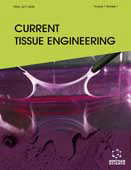Abstract
Breast cancer is the leading cause of death among women worldwide in both developed and developing countries. Over the years we see an explosion of treatments in the forms of surgical, biological, hormonal, radiation, and chemo therapies for breast cancer patients. Recent advances in tissue engineering herald a new approach to fight breast cancer. This review will begin with an introduction on breast cancer oncology and its pharmacotherapeutic issues, followed by an overview of the current landscape of breast cancer treatments, and then the description of the applications of tissue engineering in breast cancer treatment. Of particular interest is the development of tumor 3D culture models in breast cancer research as a platform for pharmacotherapy. Besides being important in shedding light on breast cancer mechanisms of tumorigenesis, metastasis, microenvironment, signaling pathways, and cancer treatment, in vitro 3D cell model can be used as an assessment tool in anti-breast cancer drug therapy. A part of this review will focus on some of the key constituents of 3D cell model, including the consideration of cell source, biomaterial biocompatibility, the generation of crucial microenvironmental cues, the optimal design of constructs and scaffold for the cells. Finally, this review closes with a brief discussion on the various perfusion configurations currently used for 3D cell culturing systems. Tissue engineering provides a promising mean to further understand breast cancer and most importantly to derive potentially effective treatments for this deadly disease.
Keywords: 3D tumor culture model, breast cancer, pharmacotherapy, tumorigenesis, microenvironmental, pathophysiological, pathophysiological, serine/threonine kinase 11, chemotherapy, trinucleotide.
 51
51

